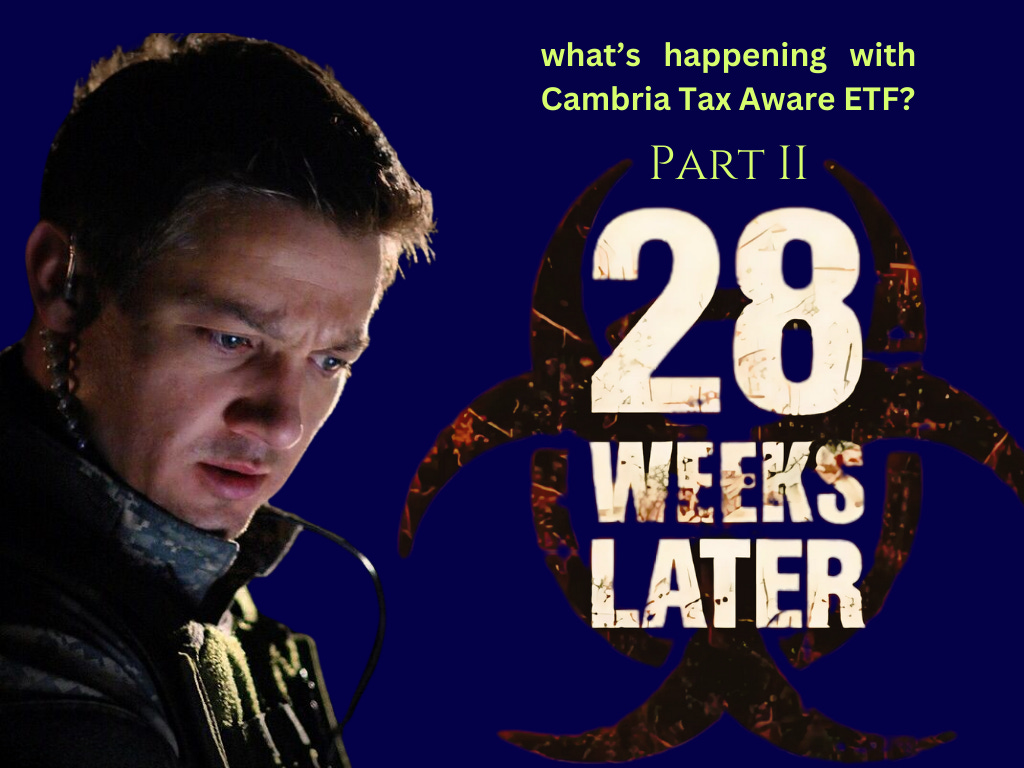28 weeks later: What's stopping Cambria Tax Aware ETF from hitting its target allocation?
Why 3 to 6 months to compliantly reposition an ETF seeded in-kind isn't crazy
I spoke with Wes Gray, CEO of ETF Architect, which helps launch ETFs, about seeding new ETFs in-kind using IRC Section 351. I’ve called this a get-out-of-jail-free card for separate accounts that have become high-cost index funds.

We did not discuss Cambria Tax Aware ETF (ticker TAX), but we did discuss a common question advisers ask about seeding an ETF in-kind: How long will it take an ETF seeded in-kind to hit its target allocation?
A few days ago, I wrote, "TAX looks like it did on launch day. Tracking error might be a problem.” While that remains true and is something investors should understand before contributing, compliance is the reason it could take three to six months (roughly 28 weeks, or close enough) to thoughtfully reposition a portfolio.
“They gotta make sure that whatever they accept complies with the prospectus, or else you don’t have IRS problems, you have SEC problems,” which includes documenting and explaining exceptions, Wes told me.
There has to be economic substance (IRC Section 7701(o)) behind every transaction. If an ETF portfolio manager receives assets in-kind and immediately uses custom basket in-kind redemption (IRC Section 852(b)(6)), then, at the very least, “it’d be weird,” Wes said.
“What we recommend is every single transaction you’re gonna do, you’re gonna sit down with tax counsel, and explain to them why you’re gonna do it, what’s the data, what’s the reasoning, what’s the logic…” to make sure there’s documentation every transaction has economic substance.
“This is a 10, 20-year thing, so does it really matter that we have complexities or slowness in the first three to six months? No… We want to be the de minimis tax risk, do-this-the-right-way poster boy for the IRS in a good way of how these transactions should be done.”
So, the transition will be slow and deliberate. As long as investors understand the rough timeline (which varies), they can appropriately weigh the tradeoffs, including tracking error, before contributing.
My 40+ page memezine on seeding ETFs in-kind is in review. Can you help with this page?
I want my memezine (pronounced “meem-zeen”) to be reference quality. Silly, but also useful.
The most demanding page in the book follows.
This page explains how to de-risk a concentrated single stock by using part of it to seed a new ETF.
How could I improve this page to make that concept clearer?
Memes are a time capsule
Does anyone remember Grumpy Cat? (2012). Memes surprise and entertain and then flame out. The jokes in my book won’t be funny in a few years (if they’re even funny now)… but they’ll capture the moment. That’s fine. Eventually, this stuff transitions from cringe to nostalgia, anyway.

Thanks for reading.





